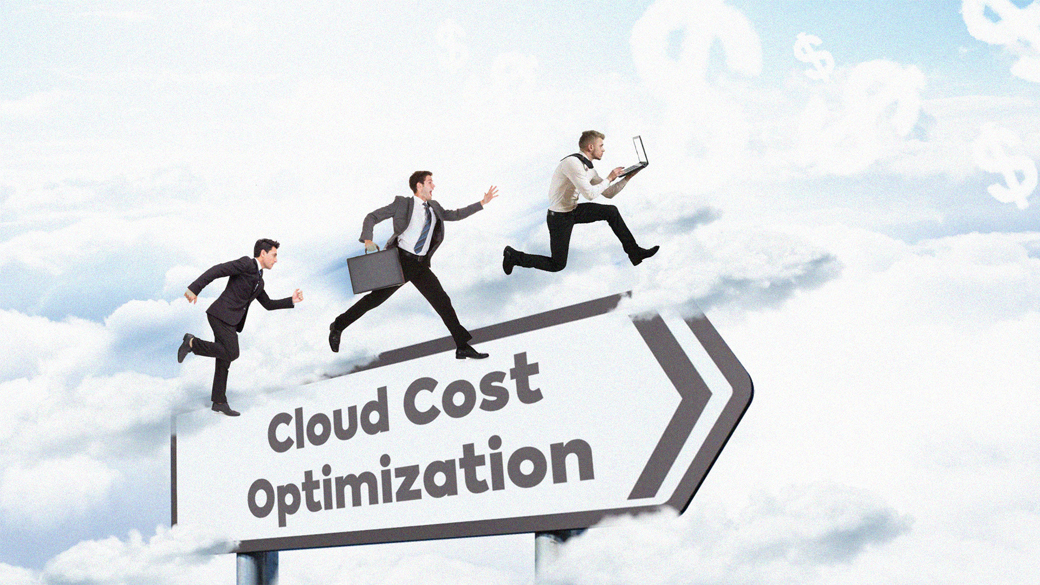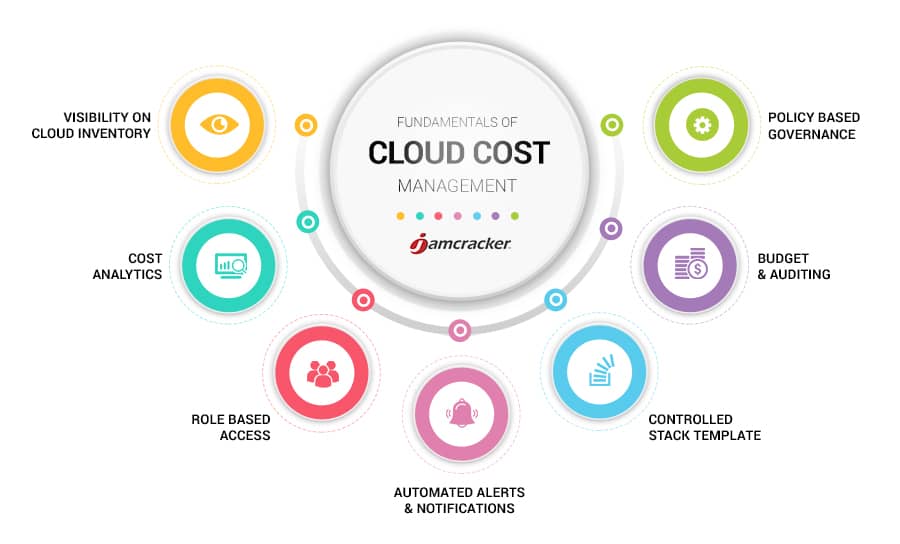Understanding Cloud Cost Optimization
Cloud cost optimization is a strategic approach to managing and reducing cloud computing expenses while maintaining or improving performance. The primary goal of cloud cost optimization is to maximize cost savings with cloud cost optimization by utilizing resources efficiently and eliminating waste. This process involves analyzing usage patterns, allocating resources effectively, and continuously monitoring costs to ensure financial efficiency.
Key Elements of Cloud Cost Optimization
Cloud cost optimization is a multi-faceted process that requires a proactive approach to cost management. Several essential components contribute to effective cloud cost optimization, including resource allocation, usage analysis, and continuous monitoring. By focusing on these elements, organizations can significantly reduce waste and minimize costs without compromising performance.
Resource Allocation
Resource allocation involves assigning the appropriate amount of cloud resources to specific workloads and applications. This process includes rightsizing, which entails selecting the most cost-effective instance types and sizes based on workload requirements. By allocating resources efficiently, organizations can prevent overprovisioning and underutilization, which often lead to unnecessary expenses.
Usage Analysis
Usage analysis is the process of examining how cloud resources are consumed within an organization. By analyzing usage patterns, organizations can identify trends, such as peak usage times, and make data-driven decisions to optimize costs. Usage analysis can also reveal opportunities for cost savings, such as consolidating resources or eliminating unused instances.
Continuous Monitoring
Continuous monitoring is crucial for maintaining financial efficiency in cloud environments. By tracking and analyzing cloud costs regularly, organizations can quickly identify anomalies, such as unexpected spikes in usage or charges, and take corrective action. Continuous monitoring also enables organizations to stay informed about their cloud spending and make adjustments as needed to maximize cost savings with cloud cost optimization.
Proactive Approach to Cost Management
Adopting a proactive approach to cost management is essential for successful cloud cost optimization. Instead of reacting to unexpected costs, organizations should take a strategic, forward-thinking approach to managing cloud expenses. This approach includes setting clear cost optimization goals, establishing policies and procedures for cost management, and regularly reviewing and adjusting cloud resource usage to ensure alignment with organizational objectives.
Selecting the Right Cloud Service Provider
When it comes to cloud cost optimization, the role of cloud service providers (CSPs) cannot be overstated. Choosing the right CSP can significantly impact an organization’s ability to achieve financial efficiency. By offering better pricing, discounts, and customized cost-saving solutions, the right CSP can help maximize cost savings with cloud cost optimization.
Better Pricing
Different CSPs offer varying pricing models, making it essential to compare options and select the one that best aligns with an organization’s needs and budget. Some CSPs provide volume discounts, while others offer tiered pricing structures that become more cost-effective as usage increases. Additionally, some CSPs provide flexible pricing models that allow organizations to pay only for the resources they use, reducing waste and minimizing costs.
Discounts
Many CSPs offer discounts for long-term commitments or reserved instances. These discounts can result in significant cost savings for organizations that can accurately predict their cloud resource requirements. For example, reserved instances allow organizations to reserve compute capacity in advance at a discounted rate, providing a cost-effective solution for workloads with predictable usage patterns.
Customized Cost-Saving Solutions
Some CSPs offer customized cost-saving solutions tailored to an organization’s specific needs. These solutions may include automated tools for resource optimization, usage analysis, and cost monitoring. By leveraging these tools, organizations can gain deeper insights into their cloud spending and identify opportunities for cost savings more effectively. Additionally, some CSPs provide dedicated cost optimization teams to help organizations optimize their cloud usage and reduce expenses.
Selecting the Right CSP
When selecting a CSP, organizations should consider several factors, including pricing, discounts, and customized cost-saving solutions. Additionally, organizations should evaluate the CSP’s reputation, security measures, and compliance with industry standards. By carefully evaluating CSP options, organizations can choose a provider that aligns with their financial and operational goals, enabling them to maximize cost savings with cloud cost optimization.

Implementing Cost-Saving Strategies
Maximizing cost savings with cloud cost optimization requires implementing effective cost-saving strategies. Here are some of the most common and effective strategies, along with their benefits and potential drawbacks:
Rightsizing
Rightsizing involves selecting the optimal cloud resource configuration for an application or workload. By selecting resources that match the workload’s requirements, organizations can avoid overprovisioning and minimize costs. Rightsizing can be done manually or using automated tools provided by CSPs. However, it requires ongoing monitoring and adjustment to ensure that resources remain properly sized as workload requirements change.
Scheduling
Scheduling involves turning off or scaling down cloud resources during periods of low usage. For example, an organization might schedule its development and testing environments to run only during business hours. Scheduling can result in significant cost savings but requires careful planning and coordination to ensure that resources are available when needed.
Utilizing Reserved Instances
Reserved instances allow organizations to reserve compute capacity in advance at a discounted rate. This strategy is ideal for workloads with predictable usage patterns, such as databases or batch processing jobs. However, organizations must commit to using the reserved instances for a specified period, typically one or three years. If usage falls short of the commitment, the organization may not achieve the expected cost savings.
Spot Instances
Spot instances allow organizations to bid on spare compute capacity offered by CSPs. The price of spot instances can be significantly lower than on-demand pricing, but the availability of capacity is not guaranteed. Spot instances are ideal for workloads that can tolerate interruptions, such as data processing or scientific computing.
Choosing the Right Strategy
Selecting the right cost-saving strategy requires a deep understanding of an organization’s cloud usage patterns and workload requirements. By analyzing usage data and workload characteristics, organizations can identify opportunities for cost savings and select the most appropriate strategy. Additionally, organizations should consider the potential drawbacks of each strategy and weigh them against the expected cost savings.
Monitoring and Adjusting Cloud Costs
Maximizing cost savings with cloud cost optimization requires continuous monitoring and adjustment. By tracking and analyzing cloud costs, organizations can identify areas for improvement and implement cost-saving strategies. Here are some tools and techniques for monitoring and adjusting cloud costs:
Cloud Cost Management Tools
Cloud service providers (CSPs) offer cost management tools that allow organizations to monitor and analyze their cloud usage and spending. These tools provide detailed usage reports, cost breakdowns, and recommendations for cost optimization. For example, AWS Cost Explorer and Azure Cost Management are popular cost management tools that provide insights into usage patterns, identify underutilized resources, and recommend cost-saving actions.
Tagging and Cost Allocation
Tagging is a technique for labeling cloud resources with metadata, such as the department, project, or application that uses the resource. By tagging resources, organizations can allocate costs to specific departments, projects, or applications and gain visibility into the cost of individual workloads. Tagging also enables organizations to identify underutilized resources and optimize their usage.
Automated Cost Optimization Tools
Automated cost optimization tools use machine learning algorithms to analyze usage patterns and identify cost-saving opportunities. These tools can automatically optimize resource usage, such as by resizing instances, turning off idle resources, and purchasing reserved instances. For example, ParkMyCloud and CloudHealth are popular automated cost optimization tools that provide recommendations for cost optimization and automate the implementation of cost-saving actions.
Best Practices for Monitoring and Adjusting Cloud Costs
To maximize cost savings with cloud cost optimization, organizations should follow these best practices:
- Set up alerts and notifications for cost thresholds and usage patterns.
- Regularly review usage reports and cost breakdowns to identify areas for improvement.
- Implement cost-saving strategies, such as rightsizing, scheduling, and utilizing reserved instances.
- Monitor the effectiveness of cost-saving strategies and adjust as needed.
- Continuously optimize resource usage and allocate costs to specific departments, projects, or applications.

How to Maximize Cost Savings with Cloud Cost Optimization
Maximizing cost savings with cloud cost optimization is a critical aspect of achieving financial efficiency in the cloud. By following a step-by-step guide and implementing best practices, organizations can reduce waste, minimize costs, and improve performance. Here are some steps to maximize cost savings with cloud cost optimization:
Step 1: Assess Current Cloud Usage
The first step in maximizing cost savings with cloud cost optimization is to assess current cloud usage. Organizations should analyze their cloud usage patterns, identify underutilized resources, and eliminate waste. This can be done by using cloud cost management tools, such as AWS Cost Explorer or Azure Cost Management, to gain visibility into usage patterns and cost breakdowns.
Step 2: Implement Cost-Saving Strategies
Once organizations have assessed their current cloud usage, they can implement cost-saving strategies, such as rightsizing, scheduling, and utilizing reserved instances. Rightsizing involves resizing instances to match workload requirements, while scheduling involves turning off idle resources during off-peak hours. Reserved instances provide a discounted rate for instances that are reserved for a specific period. Organizations should weigh the benefits and potential drawbacks of each strategy and choose the one that best fits their needs.
Step 3: Continuously Monitor and Adjust Cloud Costs
Continuous monitoring and adjustment are essential to maximizing cost savings with cloud cost optimization. Organizations should set up alerts and notifications for cost thresholds and usage patterns, regularly review usage reports and cost breakdowns, and implement cost-saving strategies as needed. By continuously monitoring and adjusting cloud costs, organizations can optimize resource usage, allocate costs to specific departments, projects, or applications, and achieve greater financial efficiency.
Real-Life Examples and Best Practices
Here are some real-life examples and best practices for maximizing cost savings with cloud cost optimization:
- A software development company reduced its cloud costs by 30% by implementing a rightsizing strategy and turning off idle resources during off-peak hours.
- A financial services firm achieved a 50% discount on its cloud costs by purchasing reserved instances for its predictable workloads.
- A healthcare organization improved its financial efficiency by allocating cloud costs to specific departments and applications, enabling better cost management and accountability.
Conclusion
Maximizing cost savings with cloud cost optimization is an ongoing process that requires continuous monitoring and adjustment. By following a step-by-step guide, implementing cost-saving strategies, and using cloud cost management tools, organizations can reduce waste, minimize costs, and improve performance. By incorporating innovative and creative concepts, organizations can achieve greater financial efficiency and stay ahead of the competition in the cloud.
Challenges and Solutions in Cloud Cost Optimization
Maximizing cost savings with cloud cost optimization can be a complex and ongoing process. Organizations face several challenges in implementing cost-saving strategies, including a lack of visibility into usage patterns, inefficient resource allocation, and the complexity of cloud pricing models. Here are some common challenges and solutions in cloud cost optimization:
Challenge 1: Lack of Visibility into Usage Patterns
Without visibility into usage patterns, organizations may struggle to identify underutilized resources, optimize resource allocation, and reduce waste. This challenge can be addressed by using cloud cost management tools, such as AWS Cost Explorer or Azure Cost Management, to gain visibility into usage patterns and cost breakdowns.
Challenge 2: Inefficient Resource Allocation
Inefficient resource allocation can lead to wasted resources and increased costs. This challenge can be addressed by implementing a proactive approach to cost management, which involves continuously monitoring and adjusting resource allocation to match workload requirements. Organizations can also use automation tools, such as AWS Auto Scaling or Azure Autoscale, to automatically adjust resource allocation based on usage patterns.
Challenge 3: Complexity of Cloud Pricing Models
Cloud pricing models can be complex and difficult to understand, making it challenging for organizations to optimize costs. This challenge can be addressed by choosing a cloud service provider that offers transparent pricing and customized cost-saving solutions. Organizations can also use cloud cost management tools to simplify pricing models and optimize costs.
Solution: Holistic Approach to Cost Management
To address these challenges, organizations should adopt a holistic approach to cost management, which involves integrating cost optimization into their cloud strategy and culture. This approach involves continuous monitoring and adjustment, collaboration between teams, and the use of innovative and creative cost-saving strategies. By adopting a holistic approach to cost management, organizations can achieve greater financial efficiency and maximize cost savings with cloud cost optimization.
Real-Life Examples and Best Practices
Here are some real-life examples and best practices for addressing challenges and solutions in cloud cost optimization:
- A retail company reduced its cloud costs by 40% by using cloud cost management tools to gain visibility into usage patterns and optimize resource allocation.
- A manufacturing firm achieved a 50% discount on its cloud costs by adopting a proactive approach to cost management and continuously monitoring and adjusting resource allocation.
- A media company simplified its cloud pricing model by choosing a cloud service provider that offered transparent pricing and customized cost-saving solutions.
Conclusion
Maximizing cost savings with cloud cost optimization requires a proactive and holistic approach to cost management. By addressing common challenges, such as lack of visibility into usage patterns, inefficient resource allocation, and complexity of cloud pricing models, organizations can optimize costs, reduce waste, and improve performance. By incorporating innovative and creative concepts, organizations can achieve greater financial efficiency and stay ahead of the competition in the cloud.

Future Trends in Cloud Cost Optimization
Maximizing cost savings with cloud cost optimization is an ongoing process that requires continuous monitoring and adjustment. As cloud computing continues to evolve, organizations can expect new trends and technologies to emerge that can help them achieve greater financial efficiency. Here are some future trends in cloud cost optimization to watch out for:
Trend 1: Artificial Intelligence and Machine Learning
Artificial intelligence (AI) and machine learning (ML) are becoming increasingly important in cloud cost optimization. These technologies can help organizations analyze usage patterns, predict future costs, and optimize resource allocation. By using AI and ML, organizations can automate cost optimization and achieve greater accuracy and efficiency.
Trend 2: FinOps
FinOps, or financial operations, is a new approach to cloud cost optimization that emphasizes collaboration between finance and technology teams. By integrating financial management into cloud strategy and culture, organizations can achieve greater financial efficiency and maximize cost savings. FinOps involves continuous monitoring and adjustment, as well as the use of innovative and creative cost-saving strategies.
Trend 3: Multi-Cloud Cost Optimization
As organizations adopt multiple cloud platforms, multi-cloud cost optimization is becoming increasingly important. Multi-cloud cost optimization involves analyzing and optimizing costs across different cloud providers and platforms. By using multi-cloud cost optimization tools and techniques, organizations can achieve greater flexibility, scalability, and cost savings.
Trend 4: Cost Optimization as a Service
Cost optimization as a service (COaaS) is a new trend in cloud cost optimization that involves outsourcing cost optimization to third-party providers. By using COaaS, organizations can leverage the expertise and resources of specialized cost optimization teams. COaaS can help organizations achieve greater cost savings, reduce complexity, and improve performance.
Real-Life Examples and Best Practices
Here are some real-life examples and best practices for maximizing cost savings with future trends in cloud cost optimization:
- A financial services firm used AI and ML to analyze usage patterns and optimize resource allocation, achieving a 30% reduction in cloud costs.
- A healthcare organization adopted FinOps to integrate financial management into cloud strategy and culture, resulting in a 40% reduction in cloud costs.
- A retail company used multi-cloud cost optimization tools to analyze and optimize costs across different cloud providers, achieving a 50% reduction in cloud costs.
- A manufacturing firm outsourced cost optimization to a third-party provider, achieving a 60% reduction in cloud costs and improving performance.
Conclusion
Maximizing cost savings with cloud cost optimization requires a proactive and holistic approach to cost management. By adopting future trends in cloud cost optimization, such as AI and ML, FinOps, multi-cloud cost optimization, and COaaS, organizations can achieve greater financial efficiency and stay ahead of the competition. By incorporating innovative and creative concepts, organizations can achieve long-term ranking and provide value and usefulness to their stakeholders.

